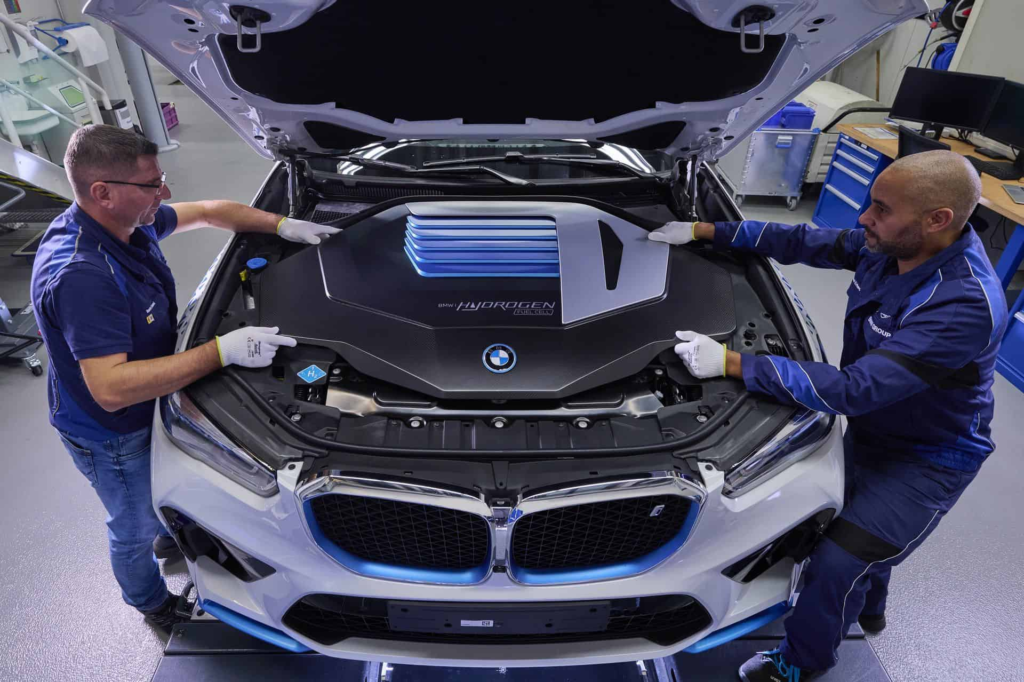Raise of Hydrogen Internal Combustion engines (H-ICE)

Hydrogen internal combustion engine (ICE) vehicles are vehicles that run on hydrogen gas, which is burned in an internal combustion engine to power the vehicle. These types of vehicles are an alternative to traditional gasoline-powered vehicles and are becoming increasingly popular due to their potential to reduce emissions and reliance on fossil fuels.
One example of a hydrogen ICE vehicle is the Toyota modified GR Yaris, a sporty hatchback that has been modified to run on hydrogen. The vehicle has a small, 1.5-liter engine that is fueled by hydrogen and is capable of producing up to 114 horsepower. The Toyota modified GR Yaris has a range of around 300 miles on a single tank of hydrogen, making it a practical choice for long distance driving.
Another example of a hydrogen ICE vehicle is the Toyota modified Corolla Sports, a compact sedan that has been modified to run on hydrogen. Like the Toyota modified GR Yaris, the Corolla Sports has a small, 1.5-liter engine that is fueled by hydrogen and is capable of producing up to 114 horsepower. The Corolla Sports also has a range of around 300 miles on a single tank of hydrogen, making it a good choice for long distance driving.
BMW also offers a hydrogen ICE vehicle, the BMW ix hydrogen. The ix hydrogen is a crossover SUV that is powered by a hydrogen-fueled internal combustion engine. The vehicle has a range of around 300 miles on a single tank of hydrogen and can reach speeds of up to 150 mph.

Overall, hydrogen ICE vehicles offer an alternative to traditional gasoline-powered vehicles and have the potential to reduce emissions and reliance on fossil fuels. These types of vehicles are becoming increasingly popular and more automakers are starting to offer hydrogen-powered options in their vehicle lineups.
While the progress of hydrogen internal combustion engines goes forward it still face challenges which need holistic approches from industry to win. There are several disadvantages and challenges to using hydrogen as a fuel for internal combustion engines:
- Hydrogen fuel is expensive: Hydrogen fuel is more expensive than gasoline, making hydrogen-powered vehicles more expensive to operate. [However, price will gradually decline and projected to reach 1-3 $ per kg level in future]
- Limited hydrogen fueling infrastructure: There are currently limited hydrogen fueling stations available, which can make it difficult to find a place to fill up a hydrogen-powered vehicle. [This will fade away with fast growing hydrogen economy]
- Storage and handling of hydrogen: Hydrogen is a highly flammable gas and must be stored in specialized tanks that are pressurized to high levels. This can make it more difficult and expensive to store and handle hydrogen compared to other fuels.
- Production of hydrogen: Hydrogen can be produced from a variety of sources, including fossil fuels, electricity, and renewable sources. However, the production of hydrogen from fossil fuels generates greenhouse gas emissions, while the production of hydrogen from electricity and renewable sources can be expensive.
- Safety concerns: Hydrogen is a highly flammable gas and there have been incidents of hydrogen-powered vehicles catching fire. However, these incidents are rare and hydrogen-powered vehicles are generally considered to be safe.
- Limited range: Hydrogen-powered vehicles generally have a limited range compared to gasoline-powered vehicles, which can be a drawback for drivers who need to travel long distances.
Overall, while hydrogen has the potential to be a clean and efficient fuel, there are several challenges and disadvantages to using it as a fuel for internal combustion engines.

